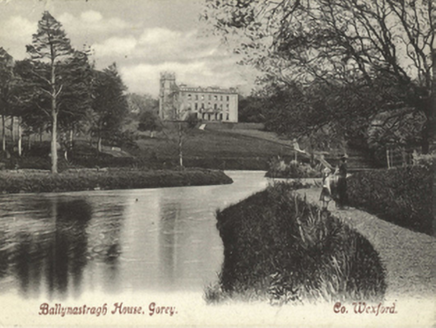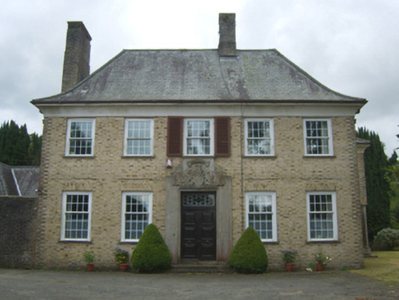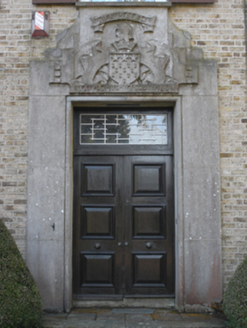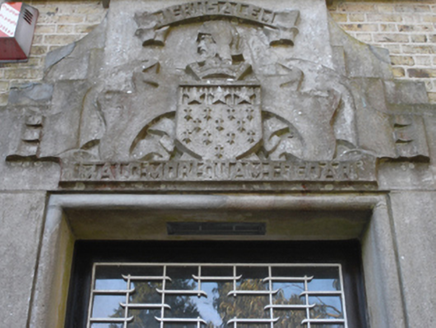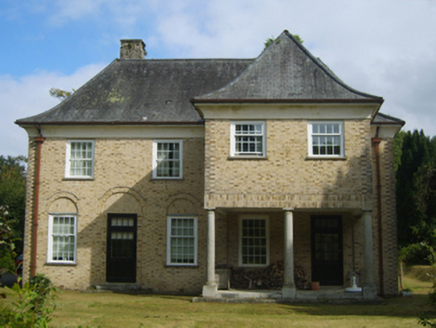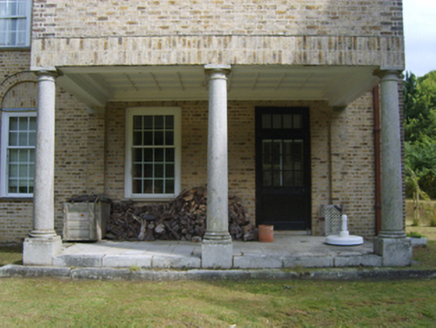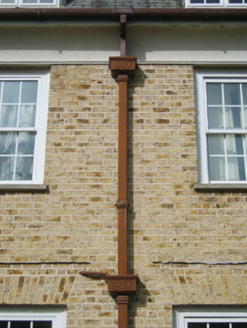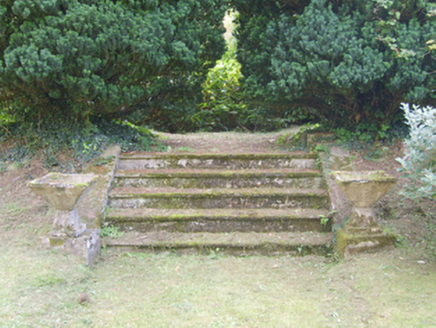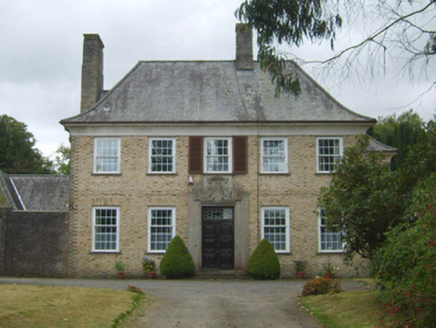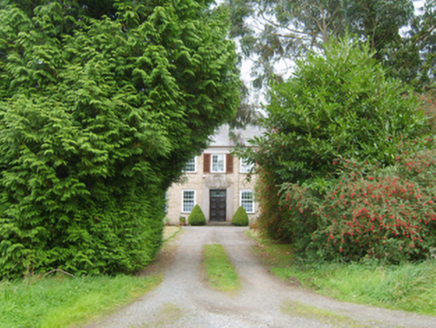Survey Data
Reg No
15700706
Rating
Regional
Categories of Special Interest
Architectural, Artistic, Historical, Social
Original Use
Country house
In Use As
Country house
Date
1935 - 1940
Coordinates
315993, 164467
Date Recorded
27/09/2007
Date Updated
--/--/--
Description
Detached five-bay two-storey country house with dormer attic, dated 1937, on a square plan; five-bay two-storey side elevations. Refenestrated, ----. Hipped slate roof on a U-shaped plan with clay ridge tiles, yellow brick Flemish bond chimney stacks on yellow brick Flemish bond bases having cornice capping, sproketed eaves, and cast-iron rainwater goods on timber eaves boards on "Cavetto" cornice retaining embossed cast-iron hoppers ("1937") and square profile downpipes. Tuck pointed yellow brick Flemish bond walls with stained yellow brick flush quoins to corners. Square-headed central door opening approached by two steps with coat of arms-detailed doorcase having bull nose-detailed reveals framing timber panelled double doors having overlight. Square-headed window openings with shallow sills, and yellow brick voussoirs framing replacement eight-over-twelve (ground floor) or eight-over-eight (first floor) sash windows without horns having part exposed sash boxes. Set in landscaped grounds.
Appraisal
A country house erected to a design by Dermot St. John Gogarty (b. 1908) of Merrion Square, Dublin (DIA), representing an important component of the twentieth-century domestic built heritage of north County Wexford with the architectural value of the composition, one rooted firmly in the contemporary Georgian Revival fashion, confirmed by such attributes as the deliberate alignment maximising on scenic vistas overlooking 'a very fine parkland with a large ornamental lake in front' (Craig and Garner 1975, 54); the compact near-square plan form centred on a restrained doorcase demonstrating good quality workmanship; the diminishing in scale of the openings on each floor producing a graduated visual impression; and the Sir Edwin Lutyens (1869-1944)-esque high pitched sproketed roofline: meanwhile, a colonnaded "loggia" survives as an interesting relic of 'the beautiful residence of Senator Sir Thomas Henry Grattan Esmonde [1862-1935] set on fire and burned to the ground' (The People 14th March 1923, 3). Having been well maintained, the elementary form and massing survive intact together with substantial quantities of the original fabric, both to the exterior and to the interior, thus upholding the character or integrity of the composition. Furthermore, a walled garden (see 15700707); and a ruined gate lodge (see 15700709), all continue to contribute positively to the group and setting values of an estate having historic connections with the Esmonde family including Lieutenant-Colonel Sir Laurence Grattan Esmonde (1863-1943), thirteenth Baronet; Sir John Lymbrick Esmonde (1893-1958), fourteenth Baronet; Sir Anthony Charles Esmonde (1899-1981), fifteenth Baronet; and Sir John Henry Grattan Esmonde (1928-87), sixteenth Baronet.
